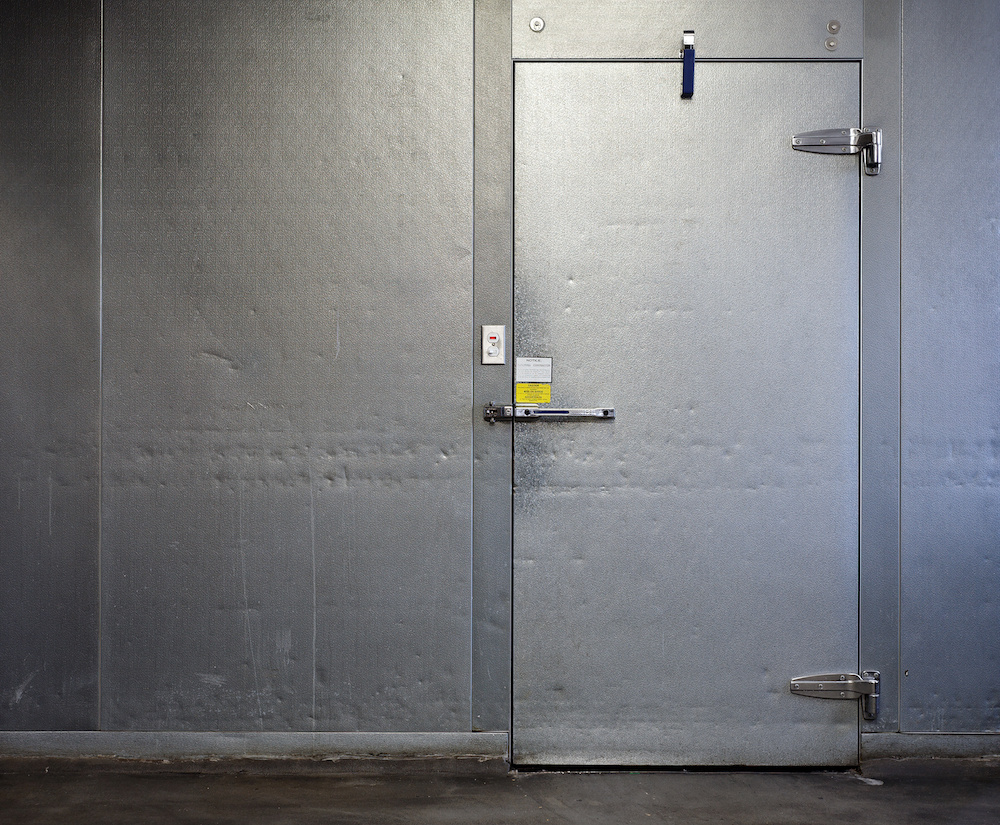
Key Components To Evaluate When Purchasing A Restaurant Walk-In Freezer or Cooler
Determining what walk-in-freezer or cooler you want for your restaurant can be overwhelming. When deciding on a new walk-in freezer, cooler, or chiller for your restaurant, there are several pieces of equipment that should be evaluated before making this very expensive purchase, including:
The Shell
Although the shell of a freezer or cooler itself doesn’t have any mechanical equipment, it is arguably one of the most important components of your walk-in space. The shell of the cooler or freezer is comprised of a variety of insulated walls and panels to ensure your space stays the designated temperature.
In 2009, the Energy Independence and Security Act (EISA) was updated to require all walk-in manufactures to produce freezers or coolers with an R-Value of R-26 of coolers and R-32 for freezers. R-Value measures the insulation quality, or the resistance to heat flow, an object contains. While these are the minimum regulatory requirements, obtaining a freezer or cooler with higher R-Values has proven to be more cost-efficient if a restaurant owner decides to keep the refrigerated space at a cooler temperature.
Insulation
Two common types of insulation used in the manufacturing process for walk-in coolers and freezers are polyurethane and extruded polystyrene. Both of these materials bring their own strengths and weaknesses to the table. For instance, both extruded polystyrene and polyurethane are small-cell structured insulation materials that start with high R-Values. However, only extruded polystyrene has notable resistance to moisture absorption and has a minimal R-Value that decreases over time.
Research conducted by the U.S. Army Corps of Engineers found that extruded polystyrene retains 75% of its R-Value over a period of five years, whereas polyurethane only retains 45% of its initial R-Value in the same time period.
Refrigerator Doors
The refrigerator door is the main means of heat exchange into a refrigerated system. With this in mind, proper sealing is vital to keeping this space and its contents properly refrigerated. Improper sealing of a door, or not properly closing a refrigerator door, will lead to air infiltration which increases the cooling load of your system, and may cause moisture buildup.
The EISA requires all walk-in freezers and coolers to have automatic door closers that will firmly close walk-in doors that have been closed to within 1-inch of full closure. Essentially, by having an insulated door with 5 to 6-inches in thickness, spring-loaded hinges, and door closers, you can ensure that your food will stay fresh even if someone on your staff forgets to fully shut the door.
Flooring
Under the EISA, walk-in freezers and coolers must meet the federal requirement for utilizing insulated floors with an R-Value of at least R-28. Insulated flooring will not only help your budget in terms of energy costs, but will also keep perishables at their correct storage temperatures.
Investing in proper walk-in flooring also helps protect your building from frost heave. Frost heave is a naturally occurring process that happens when water leaks into your unit causing it to freeze and expand. Products of frost heave can lead to a variety of serious mechanical and structural issues.
Lighting
The EISA also has requirements regarding lighting in walk-in refrigerated areas. The legislature states that walk-in refrigeration units must provide at least 110 lux (10-ft. candles) at a distance of 75 cm (30 inches) above the floor. Lighting methods for walk-in freezers and coolers include incandescent, fluorescent, and LED lights.
When making a choice in lighting, it is important to keep in mind that every bit of added heat to your walk-in unit increases the work load for your cooling system, meaning higher energy bills at the end of the day.
While fluorescents offer a huge step up from incandescent bulbs in energy efficiency, they create nine times more heat than LED lights. LEDs offer advantages in a walk-in freezers and coolers because they forgo the risk of failure at low temperatures and high humidity environments.
However, LED lights are usually more expensive than fluorescent lights. Although the initial cost of LED lights is greater, their sustainability and energy efficiency will save you more money overtime.
If you’re interested in installing a new walk-in freezer or cooler in your restaurant or other related commercial space, please feel free to contact us at RCA Contractors. We would love to help you with your next project!
